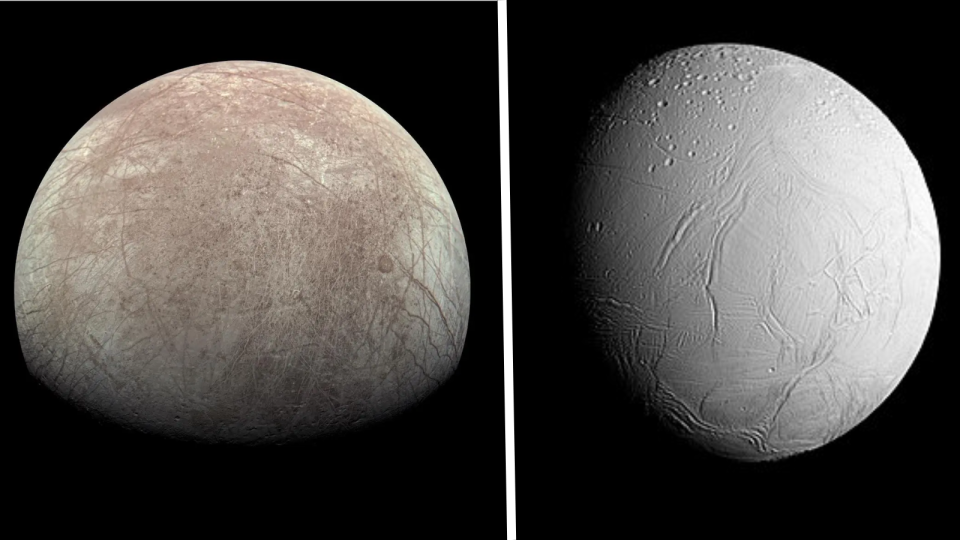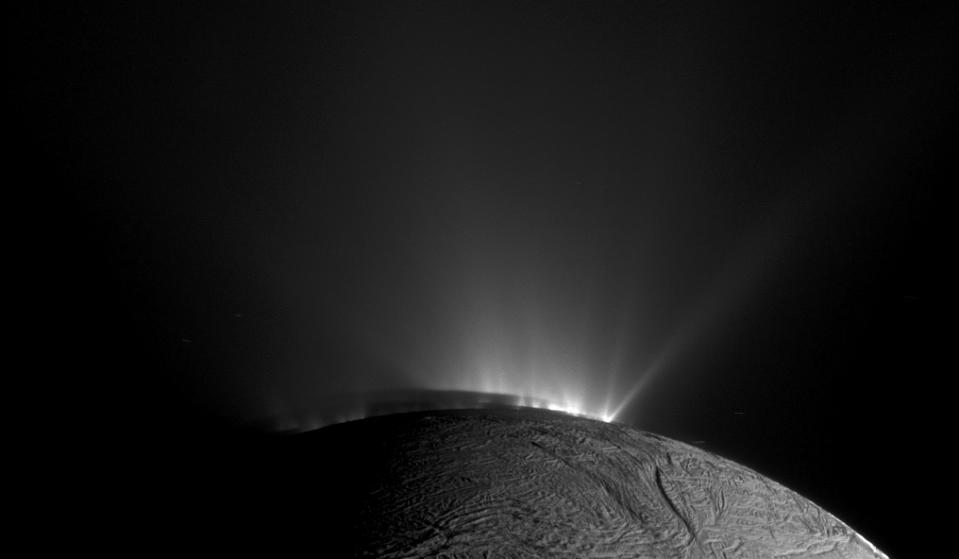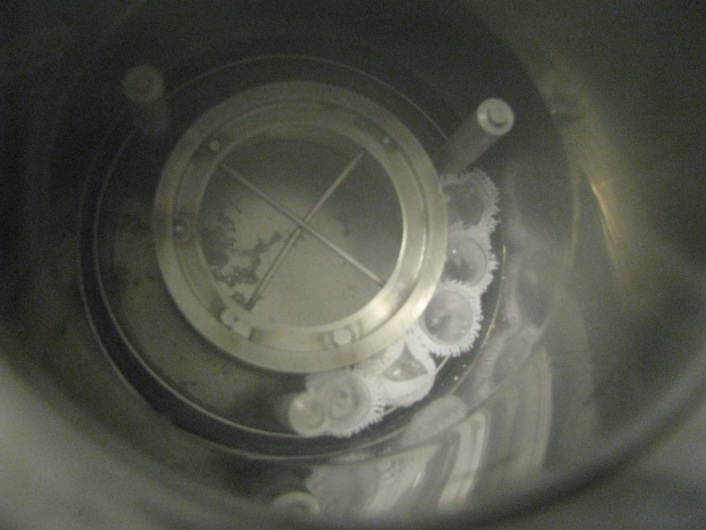When you buy through links in our articles, Future and its syndication partners may earn a commission.

If life exists on the icy ocean moons Enceladus and Europa, detectable trace molecules could survive just beneath their frozen surfaces.
Scientists have long theorized that both Enceladus, one of Saturn’s 146 known moons, and Europa, one of Jupiter’s four large Galilean moons, could harbor vast oceans of liquid water among the 95 moons in total that could support life. If so, complex organic molecules such as amino acids and nucleic acids, the building blocks of life as we know it, could serve as “biosignatures” of life on the worlds.
The problem is, both Europa and Enceladus are being bombarded by harsh solar radiation that could potentially destroy complex organic molecules on their surfaces. But new research offers some hope on this front, suggesting that those biosignatures could indeed survive if preserved in the moons’ icy shells. And if true, these molecules could be close enough to the surface that future robotic landers could potentially extract them. On Enceladus, this digging might not even be necessary; biosignature molecules could survive in shallower ice than on Europa.
“Based on our experiments, the ‘safe’ sampling depth for amino acids on Europa is nearly 8 inches (20 centimeters) at high latitudes on the trailing hemisphere, the hemisphere opposite the direction of Europa’s motion around Jupiter, in the region where the surface has not been disturbed much by meteorite impacts,” study leader Alexander Pavlov of NASA’s Goddard Space Flight Center in Greenbelt, Maryland, said in a statement. “Subsurface sampling is not required for detection of amino acids on Enceladus — these molecules survive radiolysis, degradation by radiation, at any location on Enceladus’ surface within a tenth of an inch (less than a few millimeters) of the surface.”
Related: If there is alien life on Europa, we might find it in hydrothermal vents
Dramatic plumes bursting through Enceladus’ icy shell could also allow robotic missions in orbit to retrieve these biosignature molecules from Saturn’s moon without having to visit the surface.


Life would be deep on icy moons
Although Europa and Enceladus are often cited as two of the most likely worlds to host life elsewhere in the solar system, it is highly unlikely that life exists on the surfaces of these moons. That’s because they are not only nearly atmosphereless and frigid, but are also bathed in energetic particles and radiation from the sun and cosmic rays from powerful events like extrasolar supernovae.
However, both Europa and Enceladus are thought to have liquid water oceans beneath their thick surfaces, resembling icy shells. These oceans would therefore be protected from such particles and warmed by geothermal heat generated by the gravitational pull of these moons’ parent planets and their sister moons.
That would mean that life could exist as long as these subsurface oceans have the right chemistry and an energy source.
To investigate, Pavlov and colleagues tested amino acids as they underwent radiolysis. While amino acids can be created by both living things and non-biological processes, spotting them on Europa or Enceladus would be a potential sign of life, simply because they are important to life on Earth as a key component of protein building. Amino acids could be created from the deep oceans of these moons, thanks to geyser activity, or by the churning motion of the icy outer shells themselves.


The team took samples of amino acids, sealed them in airtight vials and chilled them to about -321 degrees Fahrenheit (-196 degrees Celsius). The researchers then bombarded the amino acids with high-energy light, called “gamma rays,” at varying intensities to test the molecules’ survival capabilities.
The researchers also tested how well amino acids could survive in dead bacteria trapped in the ice of Europa and Enceladus, and what effects mixing with meteorite material would have on their survival.
By taking into account the ages of the ice on Europa and Enceladus and the radiation conditions around both moons, the team was able to calculate the drilling depth and locations where 10% of the amino acids would survive radiolytic destruction.
Experiments of this type have been conducted before, but this test produced two firsts.
It was the first time researchers considered lower doses of radiation on these molecules, which don’t completely break down the amino acids, with the team reasoning that damaged or broken-down molecules could still serve as biomarkers. And it was also the first time such a test considered the survival of amino acids in combination with meteorite dust.
The team found that amino acids broke down more quickly when mixed with silicas, similar to those found in meteorite dust. However, the amino acids in dead microbacteria broke down more slowly than average. This may be because bacterial cellular material protects amino acids from reactive compounds created by the radiation bombardment, which would otherwise accelerate their breakdown.
RELATED STORIES:
—What is astrobiology?
— Surprise! Jupiter’s ocean moon Europa may not have a fully formed core
— NASA’s Europa Clipper gets science equipment to explore Jupiter’s ocean moon
“Slow rates of amino acid destruction in biological samples under Europa- and Enceladus-like surface conditions support the case for future life-detection measurements by Europa and Enceladus lander missions,” Pavlov said. “Our results indicate that rates of potential organic biomolecule degradation in silica-rich regions on both Europa and Enceladus are higher than in pure ice and therefore potential future missions to Europa and Enceladus should be cautious about sampling silica-rich sites on both icy moons.”
The team’s paper was published Thursday (July 18) in the journal Astrobiology.